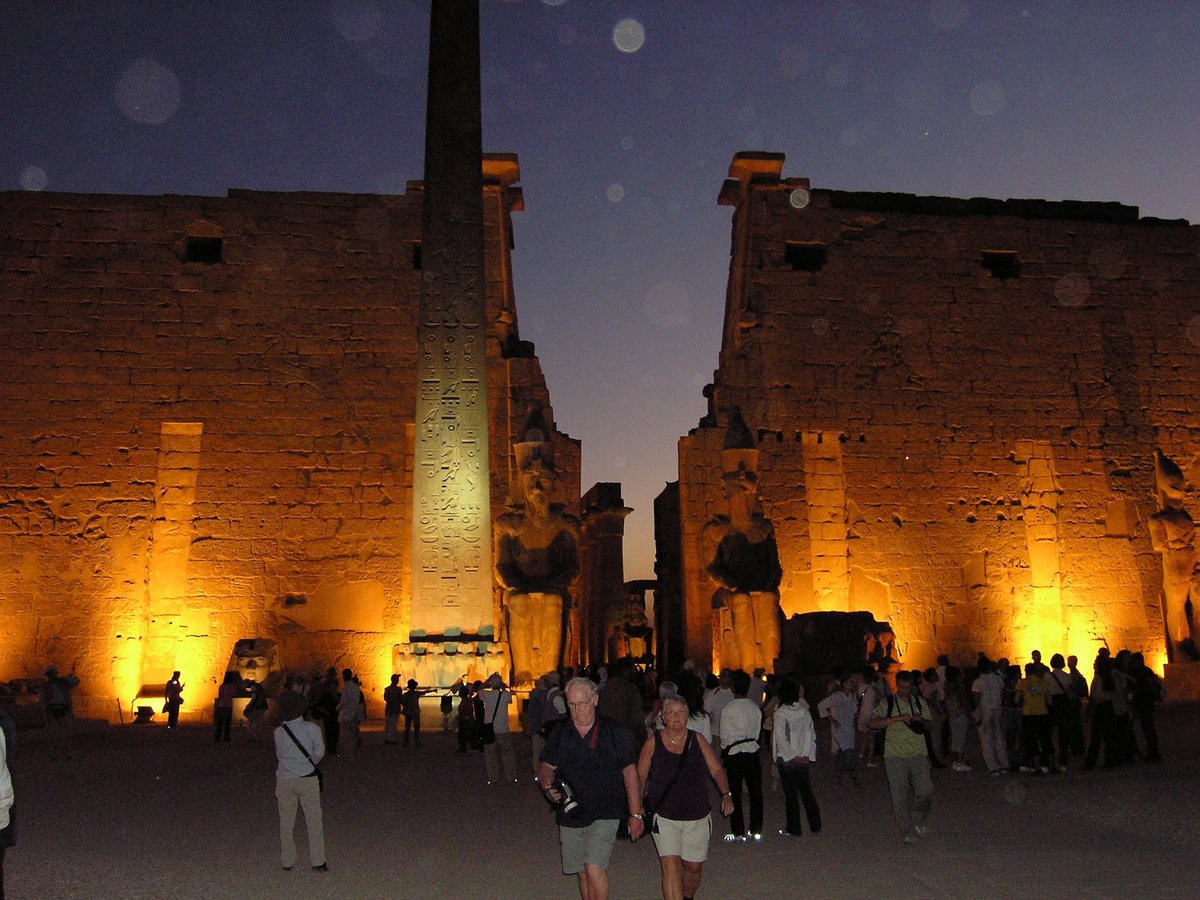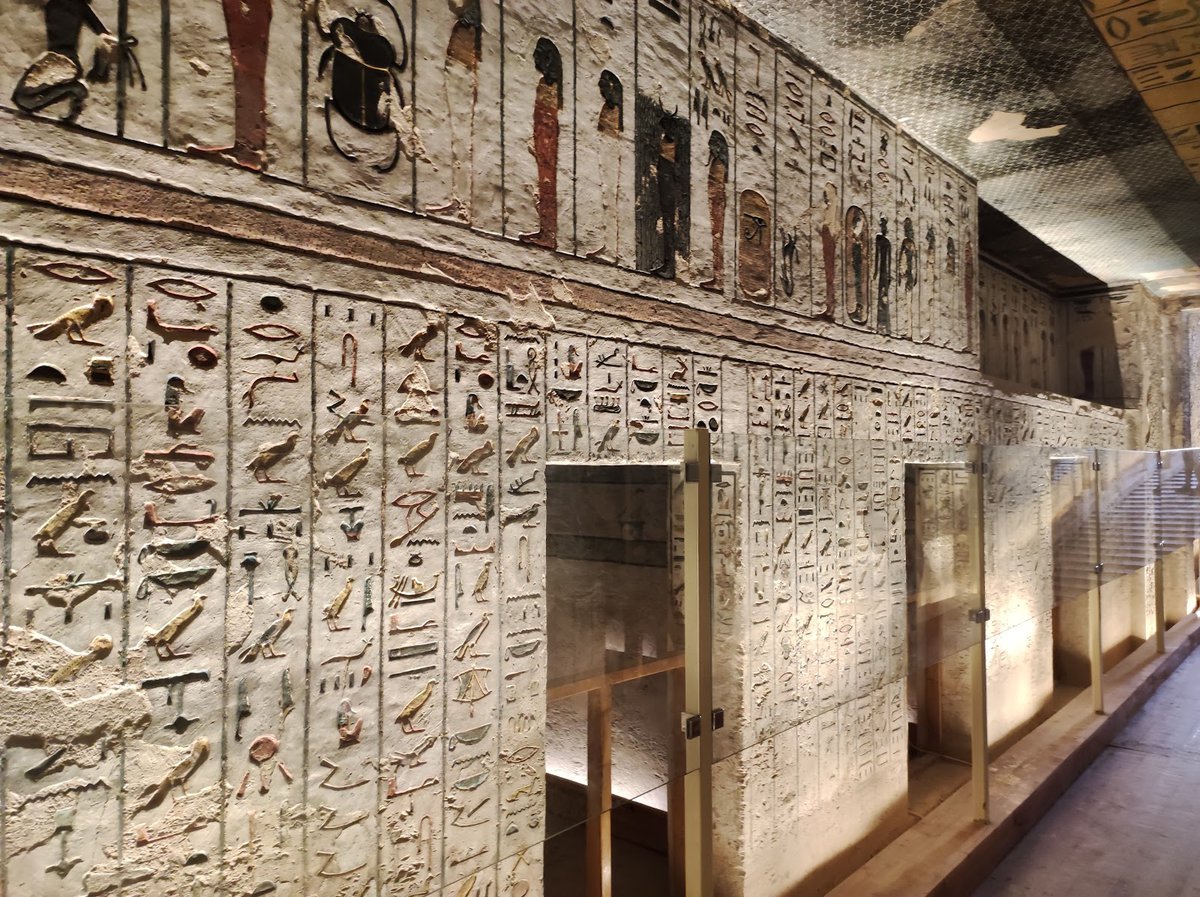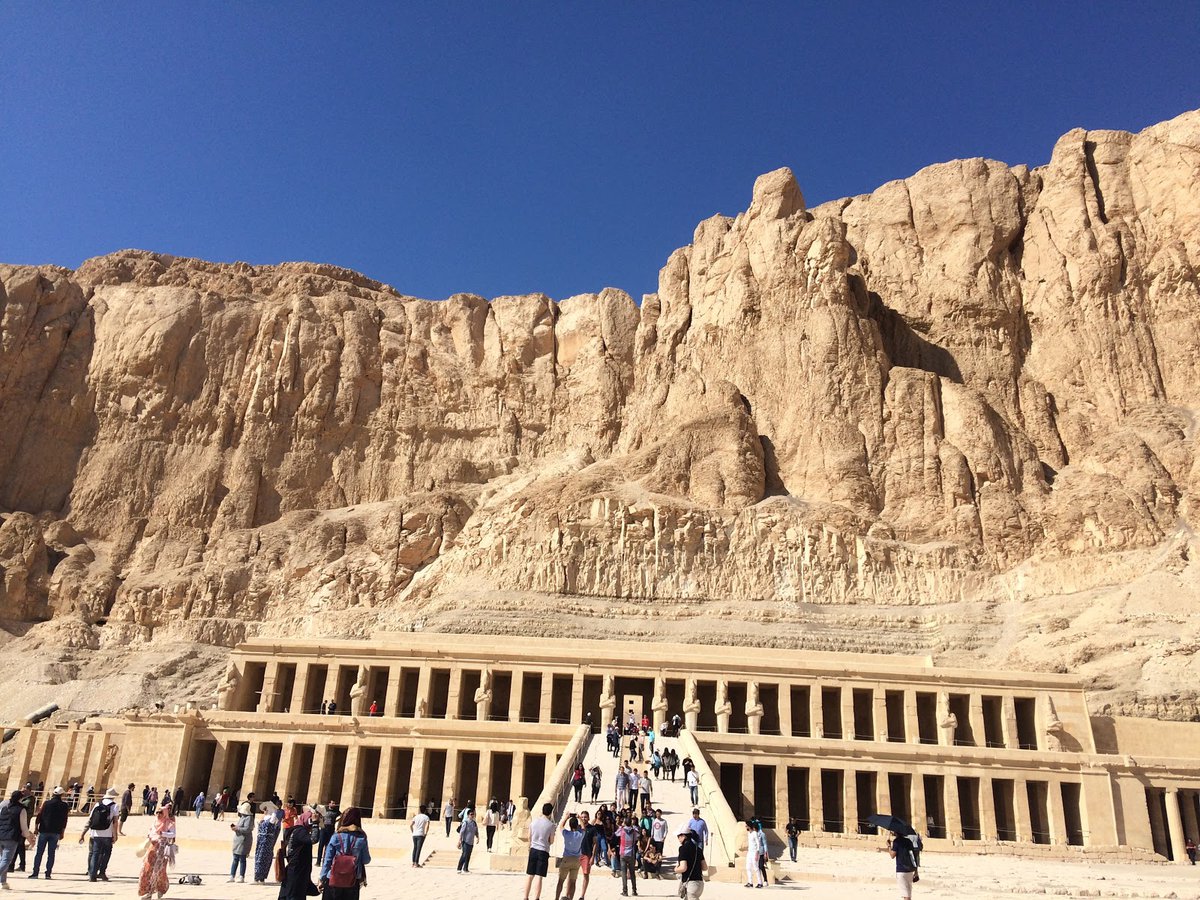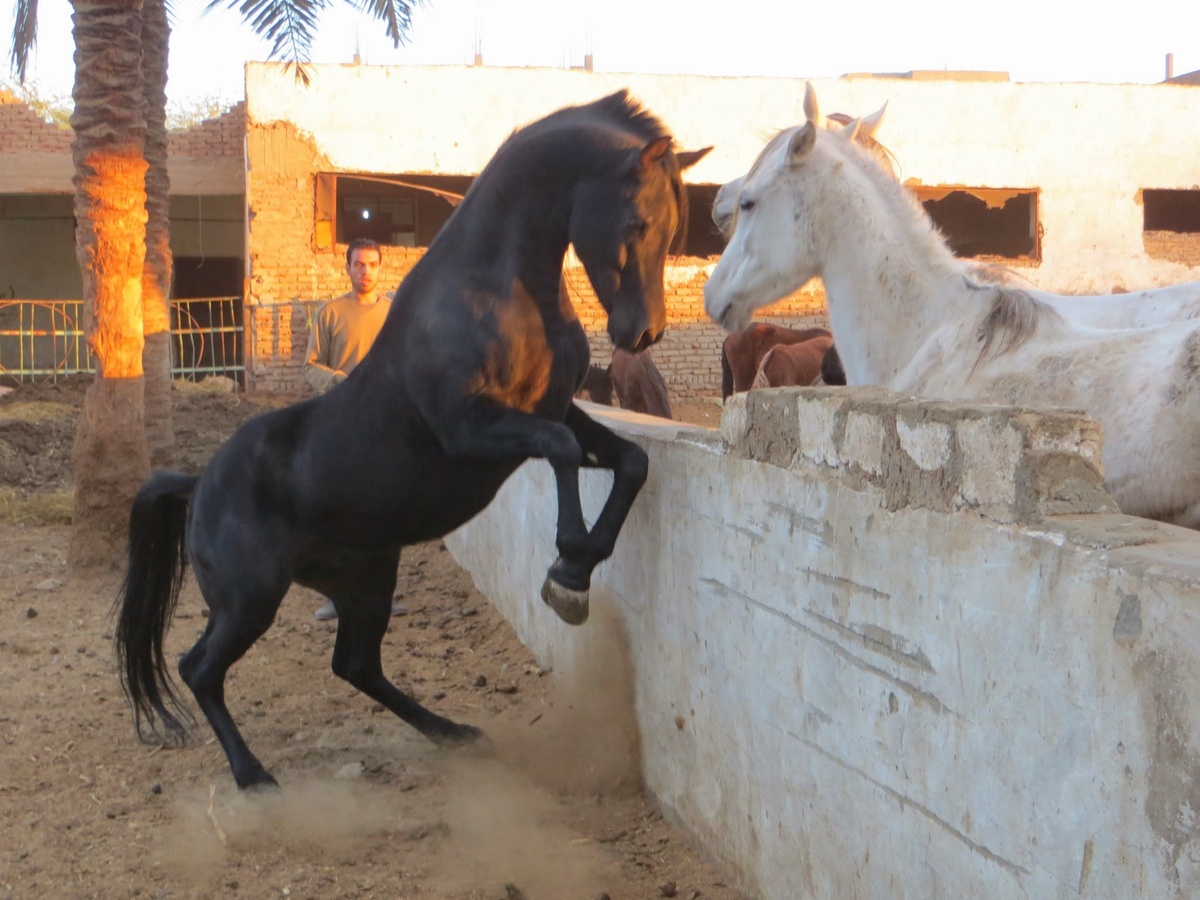13 Things to Do in Luxor (Egypt) for All Ages

Get ready to immerse yourself in the magic of Luxor (Egypt) , where breathtaking landscapes, rich culture, and exciting adventures await you at every turn. Our guide to the top 13 things to do will help you create the ultimate travel checklist and experience the best this amazing destination has to offer.
Information about Luxor (Egypt)
Luxor is a historical city mentioned in ancient manuscripts dating back more than 7,000 years, and it was known over the past ages with many names, so it was sometimes called the City of Light, the City of the Scepter, the City of the Sun and Thebes, and it is known today as the city of Luxor because there are many temples and palaces in it. luxury. The Nile River divides the city into two parts, east and west. The area of the city is 416 km2, and its population is nearly half a million. In Luxor, during your wandering, you will find many amazing attractions such as the Luxor Temple, the Statue of Amun, the Karnak Temple, and many more. Visitors prefer to visit it in the winter and autumn seasons, because the temperatures are moderate.

A list of the best Things to do in Luxor
Experience the best things to do that Luxor (Egypt) has to offer with our expertly chosen list of top-rated destinations. Our team has scoured visitor reviews and evaluations to bring you only the best options for your next adventure.
1- Temple Of Khonsu

Temple Of Khonsu – Khonsu is one of the ancient pharaonic kings, who had an imprint on the building and renaissance of the state, and he was also distinguished by his ability to exorcise evil spirits, and in honor of him, the pharaonic citizens built this huge temple inside the Karnak campus, which consists of a contemporary courtyard bordered by a gallery of twenty-eight columns, There is also a columned hall connected to the Al-Barrak campus, with open chapels on the left and right, and a staircase leading to the roof. In front of the edifice, there are the remains of a portico bordered by a row of sphinxes.
Place address: PM84+J8F, Luxor City, Luxor, Luxor Governorate, Egypt
Click here to go to the coordinates of the place on Google Map
Looking for more : The best Things to do in Luxor
2- Precinct of Amun-Re

Precinct of Amun-Re – The precinct of Amun-Re, located near Luxor, is one of the four main temple enclosures that make up the massive Karnak temple complex, and the precinct is by far the largest and only one open to the general public. The temple complex was dedicated to the main deity of the Theban triad, Amun, in the form of Amun-Ra. Today the area occupies about 250,000 square meters and contains many structures and monuments, and the main temple itself, the Temple of Amun, covers about 61 acres.
Place address: Karnak, Luxor, Luxor Governorate, Egypt
Click here to go to the coordinates of the place on Google Map
Looking for more : The best Things to do in Luxor
3- The Rams Road

The Rams Road – The Rams Road is the road that connects the Luxor Temple with the Karnak Temple, and it is a wide street that starts from the beach, and includes a number of statues represented in the form of a sphinx with a ram’s head, and the ram here symbolizes the god Amun, and the ancient Egyptians called this road the name “Wat”. Nitter”. Along this 2,700-kilometer road, there are 1,200 statues. These statues were carved from a single block of sandstone with a frieze on which the king’s name and title are written.
Place address: طريق معبد الكرنك الي، Mabad Al Oksor, Karnak, Luxor, Luxor Governorate, Egypt
Click here to go to the coordinates of the place on Google Map
Looking for more : The best Things to do in Luxor
4- First Pylon

First Pylon – The first edifice of the Karnak Temple is the last edifice built in Karnak and is the main entrance to the temple today. Its construction was never completed and it is not decorated. Even the remains of the mudbrick stairs used in the construction can still be seen inside the large court. The edifice includes a number of towers, the height of the north tower is 71 feet, and the south tower is 103 feet. Today, the edifice is considered one of the most important examples of Pharaonic architecture in Egypt.
Place address: PM94+PQ3, Luxor City, Luxor, Luxor Governorate, Egypt
Click here to go to the coordinates of the place on Google Map
Looking for more : The best Things to do in Luxor
5- Abou al-Haggag Mosque

Abou al-Haggag Mosque – Located in the first courtyard of the ancient Luxor temple complex, the Abu al-Hajjaj al-Aqsari Mosque is featured in most Egypt tour packages. Although there isn’t much of Luxor Temple, there is enough to make it one of the most visited tourist attractions in Luxor, due to its unique architecture, which includes vast courtyards, domes, minarets, and inner courtyards covered in luxurious Persian carpets.
Place address: Mabad Al Oksor, Luxor City, Luxor, Luxor Governorate, Egypt
Click here to go to the coordinates of the place on Google Map
Looking for more : The best Things to do in Luxor
6- Mortuary Temple of Seti I

Mortuary Temple of Seti I – The Temple of Seti I is the memorial temple of the New Kingdom pharaoh Seti I. The edifice is located in the Theban necropolis in Upper Egypt, across the Nile from the modern city of Luxor (Thebes), near the city of Qurna. It appears that the temple was built at the end of Seti’s reign, and may have been completed by his son, Ramesses the Great, after his death. One of the rooms of the temple contains a shrine dedicated to the father of Seti Ramses I. The temple complex was originally surrounded by a wall 124 meters wide and 162 meters long, made of Nile mud bricks, and its height was probably 10.50 meters interrupted by several towers. The entrance to the temple was from the east through the first large edifice.
Place address: Naga Al Taref Inside Rd, Al Qarnah, Luxor, Luxor Governorate, Egypt
Click here to go to the coordinates of the place on Google Map
Looking for more : The best Things to do in Luxor
7- Sacred Lake

Sacred Lake – The sacred lake or the sacred lake of Karnak Temple is a natural lake that is the largest of its kind in the region. It is lined with a stone wall and has stairs that go down to the water. The lake was used by priests for baptisms and for some of their religious rituals, and it was also home to the sacred geese of Amun (the goose is another symbol of Amun) and was a symbol of the primordial waters from which life arose. Today, the lake is one of the most important tourist attractions in Luxor.
Place address: El-Shaikh Mousa, Karnak, Luxor, Luxor Governorate, Egypt
Click here to go to the coordinates of the place on Google Map
Looking for more : The best Things to do in Luxor
8- Mortuary Temple of Amenhotep III

Mortuary Temple of Amenhotep III – The mortuary temple of Amenhotep III is located in the West Bank, directly across the Nile River from Thebes. It was built by Pharaoh of the Eighteenth Dynasty, Amenhotep III. It was the largest mortuary temple in the Thebes necropolis, and even larger than the Karnak complex at that time, and it covered an area estimated at 350,000 square metres. Square meters. The temple was distinguished by its unique architectural design, which includes columns, arches, spacious squares, and muqarnas, which we can see clearly today.
Place address: PJC5+GJ6, Al Bairat, Luxor, Luxor Governorate, Egypt
Click here to go to the coordinates of the place on Google Map
Looking for more : The best Things to do in Luxor
9- Dra’ Abu el-Naga’ Necropolis

Dra’ Abu el-Naga’ Necropolis – The tomb of Dir Abu al-Naga is located on the west bank of the Nile in Thebes, Egypt, at the entrance to the dry bay leading to Deir el-Bahri and north of the El-Asasif necropolis. The cemetery includes mausoleums of a number of pharaoh kings and their families, and it was decorated with distinctive inscriptions and decorations, to become today one of the most important archaeological sites in the Luxor region, and tourists and archaeologists come here frequently to see this beauty.
Place address: Unnamed Road, Al, القرنة، الأقصر، Egypt
Click here to go to the coordinates of the place on Google Map
Looking for more : The best Shrines in Luxor
10- Tombs of the Nobles

Tombs of the Nobles – Some of the best archaeological tourist attractions in the country are the Tombs of the Nobles in Luxor. Located in the foothills opposite Ramesseum, there are more than 400 tombs belonging to nobles from the Sixth Dynasty to the Greco-Roman period. The royal tombs were decorated with mysterious passages from the Book of the Dead to guide them in the afterlife. The nobles, intent on letting the good life continue after their death, decorated their tombs with exquisitely detailed scenes of their daily lives.
Place address: قسم الواحات الخارجة، الوادي الجديد، Egypt
Click here to go to the coordinates of the place on Google Map
Looking for more : The best Things to do in Luxor
11- Theban Necropolis

Theban Necropolis – The Thebes Necropolis or Tomb of Thebes is an ancient necropolis covering a vast area on the west bank of the Nile River in Luxor in Upper Egypt, and the area is undoubtedly one of the most popular tourist attractions in Egypt. Thebes, the city of the god Amun, was the capital of Egypt during the Middle and New Kingdoms period, and includes temples, palaces and a number of important archaeological sites.
Place address: قسم الواحات الخارجة، الوادي الجديد، Egypt
Click here to go to the coordinates of the place on Google Map
Looking for more : The best Shrines in Luxor
12- Luxorstables – Nobi Arabian Horse Stables

Luxorstables – Nobi Arabian Horse Stables – Luxor Equestrian is owned by Emma who is a British lady. Offering the same quality and safety standards as they are known, they specialize in unique horseback riding excursions for all levels and groups. Visit the surrounding local Bedouin villages, watch farmers working their fields and grazing buffaloes in the shallow waters of the Nile, sugarcane plantations, fertile pastures and ancient Egyptian ruins on the west bank of the famous Nile River while riding one of the beautiful Arabian horses that guide you through the wonders of this country on a journey of One to three hours or a full day. It is a wonderful adventure with a lot of suspense and excitement, so do not hesitate and book one of these tours with your family and friends.
Place address: Luxorstables – Nobi Arabian Horse Stables, P.O. Box 234, Al Bairat, Luxor, Egypt, Luxor Governorate 23501, Egypt
Click here to go to the coordinates of the place on Google Map
Looking for more : The best Things to do in Luxor
13- Tomb of Tut Ankh Amun

Tomb of Tut Ankh Amun – Tutankhamun’s tomb is located in the Valley of the Kings, between the tombs of Ramses II and Ramesses IV, and is one of the most important archaeological sites in the world. The design of Tutankhamun’s tomb is typical of the design of the kings of the Eighteenth Dynasty, and at the entrance to the tomb there is a set of stairs leading to a short corridor leading to a group of rooms, the first room is an antechamber where many household items for Tutankhamun’s journey were found forever, Outside this room there is an extension, and at the far end there is an opening leading to the burial chamber. This chamber is guarded by two statues of the Black Guard, symbolizing the hope of rebirth.
Place address: Kings Valley Rd, قسم الواحات الخارجة، New Valley Governorate, Egypt
Click here to go to the coordinates of the place on Google Map
Looking for more : The best Shrines in Luxor
Conclusion
Exploring Luxor (Egypt) is a journey that will take you through diverse landscapes, vibrant cultures, and captivating histories. Our guide has given you a taste of the must-see destinations and hidden treasures that await, but there’s always more to discover. Take the time to connect with the locals, try the local cuisine, and immerse yourself in the traditions and customs that make Luxor (Egypt) so special. Whether you’re seeking adventure, relaxation, or enlightenment, Luxor (Egypt) has something to offer everyone. As you journey through this remarkable region, we invite you to let go of your worries and embrace the present moment. Take time to appreciate the beauty that surrounds you, and allow yourself to be swept away by the magic of Luxor (Egypt) . We hope our guide has been a valuable resource in planning your trip, and we look forward to hearing about your travels. Until then, happy exploring!